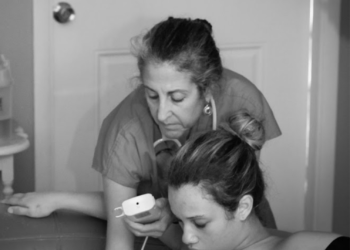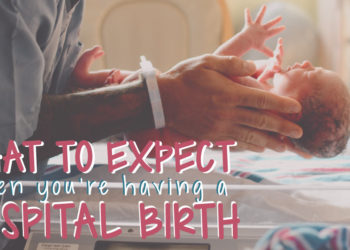If you’re a mother who has previously undergone a c-section, you might be wondering, “What is a VBAC?” VBAC, or Vaginal Birth After Cesarean, is an option that more and more women are exploring. You can make the best decision for your body and baby with the right information.
What is a VBAC?
A VBAC, or Vaginal Birth After Cesarean, is exactly what it sounds like a delivery method where a woman who has previously had a cesarean section (C-section) gives birth vaginally. In medical parlance, if a woman chooses to attempt birthing this way, it’s often referred to as a “Trial of Labor After Cesarean” (TOLAC).
Vaginal Birth versus Repeat C-Section: The Basics
Many women are not given the choice of vaginal birth after a c-section and are instead scheduled for repeat cesarean sections. However, it’s important to remember that each birth method has potential risks and benefits.
Risks of VBAC
The most significant risk related to VBAC is uterine rupture, which, while severe, is relatively rare. If a woman experiences a uterine rupture, it can be life-threatening for both her and the baby. Other potential risks include infection, bleeding, and the need for an emergency C-section if complications arise during labor.
Benefits of VBAC
VBAC offers several physical and emotional benefits for women who choose this method. Some advantages include a shorter recovery time than a cesarean section, a reduced infection risk, and avoiding abdominal surgery. This can also allow women to experience the joy and empowerment of a vaginal birth, which can have positive emotional and psychological effects.
Who is a Good Candidate for Vaginal Birth After a C-Section?
Not all women who have had a previous C-section are suitable candidates for a vaginal birth. The decision to attempt a vaginal birth after a Cesarean section should be made on an individual basis, taking into account various factors such as:
- Reason for previous C-section: The reason for the previous cesarean delivery plays a significant role in determining the suitability for a VBAC. For example, if the previous C-section was performed due to an emergency situation, such as fetal distress or a placental abruption, a vaginal birth may not be recommended.
- Type of uterine incision: The type of incision made during the previous C-section can also impact the likelihood of a successful VBAC. A low transverse incision, known as a “bikini cut,” is considered the most favorable for a vaginal birth. Vertical or classical incisions have a higher risk of uterine rupture and may not be suitable for a VBAC.
- Pregnancy factors: Certain pregnancy factors, such as advanced maternal age, a large baby, or certain medical conditions, may increase the risk of complications during a VBAC. These factors should be considered when making the decision.
- Availability of resources: The availability of experienced healthcare providers and facilities that support a vaginal birth after a Cesarean section is essential. Not all hospitals, birthing centers, or healthcare providers are equipped or willing to perform VBACs, so discussing this option with your healthcare team is important.
The Importance of Informed Decision-Making
The decision to attempt a VBAC should be made through an informed and shared decision-making process between the woman and her healthcare provider. It’s crucial to discuss the risks, benefits, and individual circumstances to make the best decision for the mother and the baby.
It’s also important to remember that a failed vaginal birth after a C-section does not mean a woman has failed or made the wrong choice. Each birth experience is unique, and sometimes unforeseen circumstances arise that require a C-section. Regardless of the delivery method, the ultimate goal is a healthy baby and mother.
A VBAC can be a viable and empowering choice for women who have had a previous C-section. While risks are involved, weighing them against the potential benefits and individual circumstances is essential. The decision to attempt a VBAC should be made through open communication with healthcare providers and a thorough understanding of the factors involved. With the right support and resources, a successful vaginal birth can provide a positive and fulfilling birth experience for many women.

















